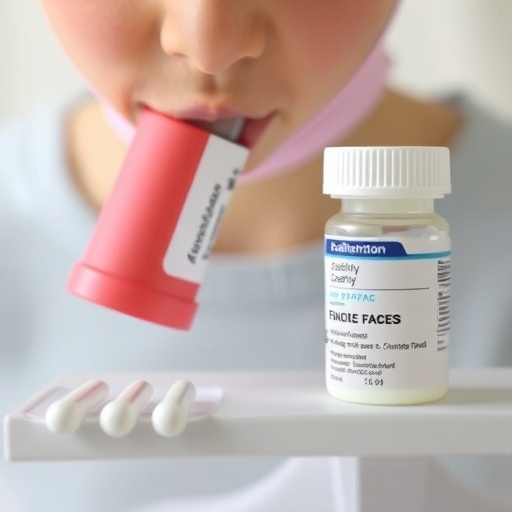April 24, 2018 – About 2.6 million American children and adolescents had diagnosed anxiety and/or depression in 2011-12, reports an analysis of nationwide data in the Journal of Developmental & Behavioral Pediatrics, the official journal of the Society for Developmental and Behavioral Pediatrics. The journal is published by Wolters Kluwer.
The number of children with diagnosed anxiety – but not depression – has increased in recent years, according to the new report. The lead author was Rebecca H. Bitsko, PhD, of the National Center on Birth Defects and Developmental Disabilities, Centers for Disease Control and Prevention.
Study Shows High Rates and Impact of Anxiety and Depression in American Youth
The researchers analyzed data from the nationally representative National Survey of Children's Health for the years 2003, 2007, and 2011-12. In the most recent year, more than 65,000 parents were asked about problems with anxiety and/or depression (diagnosed by a doctor or other healthcare professional) in their children aged six to 17 years.
In the 2011-12 survey, 5.3 percent of children and teens had current anxiety or depression. The prevalence of current anxiety increased significantly between surveys: from 3.5 percent in 2007 to 4.1 percent in 2011-12. By comparison, the prevalence of current depression showed no significant change: 2.5 and 2.7 percent, respectively.
"These estimates correspond with approximately two million children aged six to 17 years in 2011-12 with current anxiety, 1.4 million children with current depression, 2.6 million with current anxiety or depression, and 760,000 children with both," Dr. Bitsko and coauthors write. The percentage of children who had ever been diagnosed with anxiety or depression increased from 5.4 percent in 2003 to 8.4 percent in 2011-12.
Children with anxiety and/or depression were more likely to have other diagnosed chronic health conditions as well, including neurobehavioral disorders and obesity. Even after adjustment for other health problems, the presence of anxiety or depression was associated with increased use of healthcare services, more problems at school, and higher levels of aggravation for parents.
"Despite significant healthcare needs, nearly 20 percent of children with anxiety or depression did not receive mental health treatment in the past year," Dr. Bitsko and coauthors write. Only about one-third of the children with anxiety or depression had a "medical home" – that is, a usual source of healthcare with referrals and care coordination, if needed.
Based on repeated surveys of a nationwide sample of parents, the study provides new information on the burden of anxiety and depression among US children and adolescents. The reasons for the increase in parent-reported anxiety are unclear. This trend may reflect improved identification or increased use of mental health services, or an increase in the number of children experiencing anxiety symptoms, the authors suggest.
Based on repeated surveys in nationally representative samples, the study provides new insights into the prevalence and burden of anxiety and depression in children and teens. The researchers note that the national estimates are lower than data from community-based studies, "suggesting that child anxiety may be under-diagnosed."
"Children with anxiety and depression may have needs that go beyond diagnosis and mental health treatment," Dr. Bitsko comments, "Anxiety and depression are associated with school problems, parenting stress, and unmet medical needs. Parents, healthcare providers, and teachers can look for ways to support children with anxiety and depression in all areas of the child's life." The researchers emphasize the need for further research to identify factors associated with the increased prevalence of anxiety, and to evaluate how improved care coordination and other strategies can improve the health and well-being of children with anxiety and depression.
###
Click here to read "Epidemiology and Impact of Health Care Provider-Diagnosed Anxiety and Depression Among US Children."
DOI: 10.1097/DBP.0000000000000571
About the Journal of Developmental & Behavioral Pediatrics
Written for physicians, clinicians, psychologists and researchers, each bimonthly issue of the Journal of Developmental & Behavioral Pediatrics (http://www.jrnldbp.com) is devoted entirely to the developmental and psychosocial aspects of pediatric health care. Each issue brims with original articles, case reports, challenging cases and reviews–the latest work of many of today's best known leaders in related fields–that help professionals across disciplines stay current with the latest information in the field. Relevant areas covered include learning disorders, developmental disabilities, and emotional, behavioral, and psychosomatic problems. Journal of Developmental & Behavioral Pediatrics is the official journal of the Society for Developmental and Behavioral Pediatrics.
About Wolters Kluwer
Wolters Kluwer is a global leader in professional information, software solutions, and services for the health, tax & accounting, finance, risk & compliance, and legal sectors. We help our customers make critical decisions every day by providing expert solutions that combine deep domain knowledge with specialized technology and services.
Wolters Kluwer, headquartered in the Netherlands, reported 2017 annual revenues of €4.4 billion. The company serves customers in over 180 countries, maintains operations in over 40 countries, and employs approximately 19,000 people worldwide.
Wolters Kluwer Health is a leading global provider of trusted clinical technology and evidence-based solutions that engage clinicians, patients, researchers and students with advanced clinical decision support, learning and research and clinical intelligence. For more information about our solutions, visit http://healthclarity.wolterskluwer.com and follow us on LinkedIn and Twitter @WKHealth.
Media Contact
Connie Hughes
[email protected]
646-674-6348
@WKHealth
http://www.lww.com




